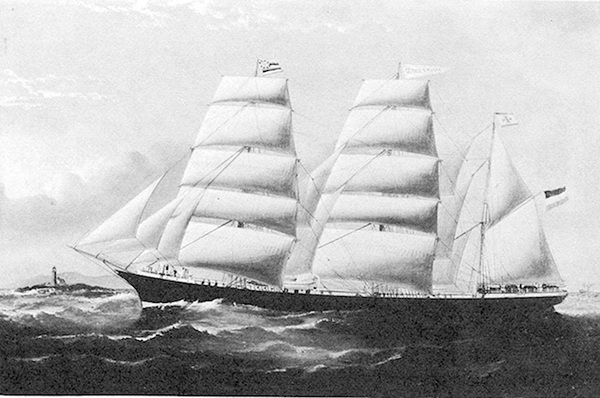Built in Scotland in 1892 for H. Hackfeld Co. of Honolulu, the bark “George N. Wilcox” was named for Grove Farm Plantation owner, politician and philanthropist George Norton Wilcox (1839-1933). “George N. Wilcox” had already completed one successful voyage when
Built in Scotland in 1892 for H. Hackfeld Co. of Honolulu, the bark “George N. Wilcox” was named for Grove Farm Plantation owner, politician and philanthropist George Norton Wilcox (1839-1933).
“George N. Wilcox” had already completed one successful voyage when it sailed from Middlesbrough, England on May 10, 1894, bound for Honolulu around Cape Horn, carrying a cargo of 1,000 tons of coal, 1,200 tons general merchandise and 500 cases of liquor.
The ship had been tacking at 3 mph about one-quarter mile off the coast of Molokai on Sept. 18, 1894, at about 4 p.m., when its stern bumped into some rocks.
Waves then sent the vessel shoreward, where it struck a rocky coastline.
There, more waves smashed it onto shore rocks that pierced its hull, quickly flooding it.
Thus, at about 4:30 p.m., “George N. Wilcox” was shipwrecked broadside on rocks in three fathoms of water in a small cove with cliffs rising behind it about one-half mile from Ilio Point, Molokai.
Capt. Wolters and his crew of nine men abandoned ship at 6:30 p.m. and set sail for Honolulu in two open boats, arriving there on the 20th, where Wolters reported to Mr. Suhr of H. Hackfeld Co.
Following an inspection of the shipwreck by underwriters, it was determined that the “George N. Wilcox,” valued at about $75,000, was a total loss, and nothing could be saved of its cargo, and no attempt would be made to haul it off the rocks.
Wolters, a native of Germany, had been sailing in the islands since 1871, and was considered to be the commodore of the H. Hackfeld Co. fleet.
“George N. Wilcox” was the first ship he’d lost.
He was criticized for allowing the ship too close to the coast and for not dropping anchors to prevent it from drifting shoreward.


